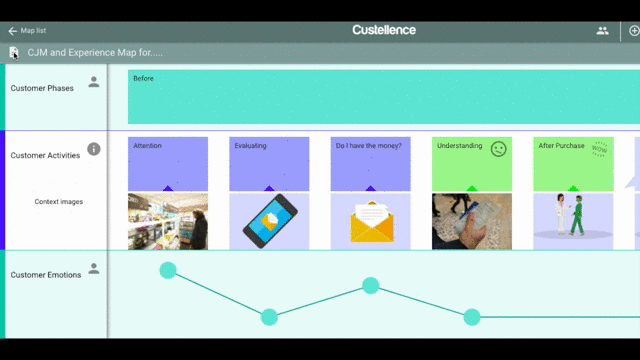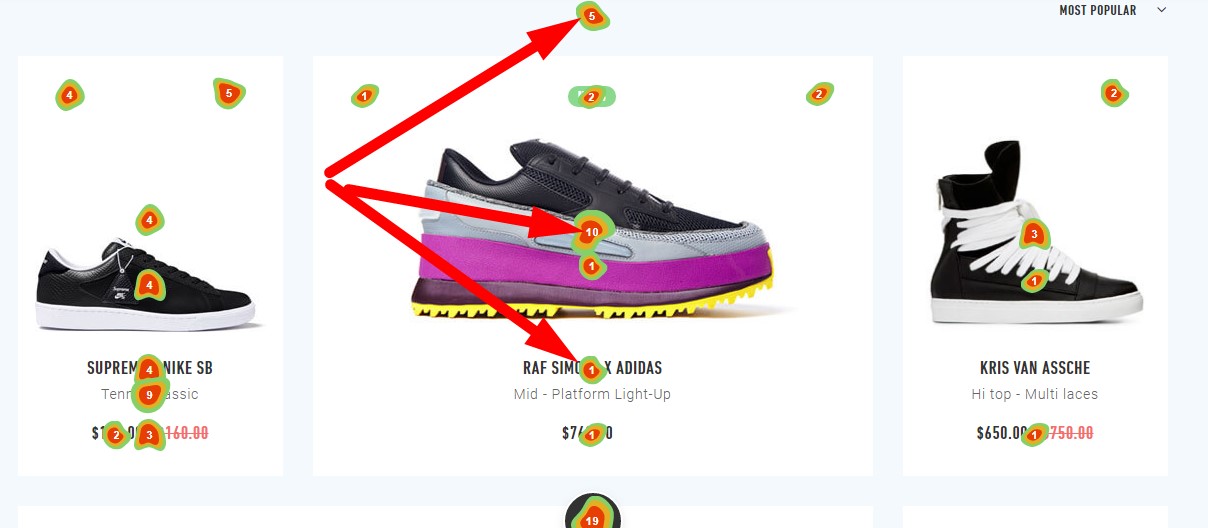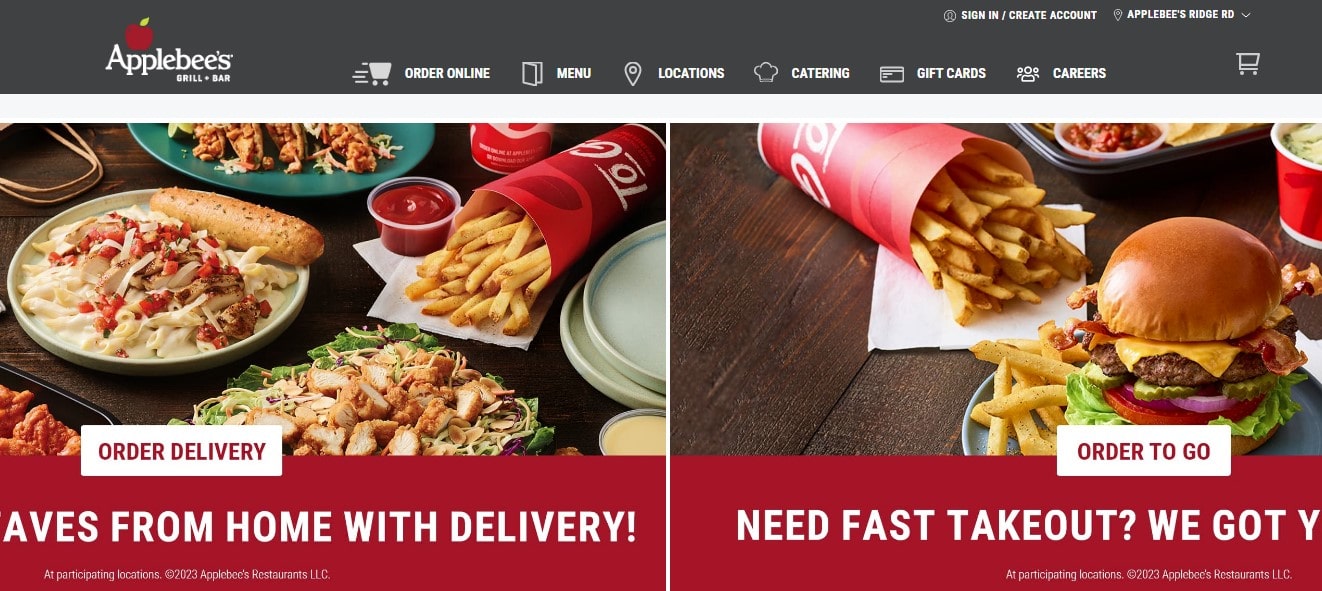In the intricate dance of business strategy, the Customer Journey Map plays a pivotal role. This map – far from a mere graphic – traces every twist and turn a customer takes through the intricate landscape of brand interaction. By understanding this journey, brands can tailor experiences, carving out smoother pathways and sidestepping pitfalls.
Highlights of a Customer Journey Map:
- Pinpoints touchpoints that shape customer perceptions.
- Charts emotional highs and lows, revealing opportunities for enhancement.
- Streamlines processes, ensuring each journey phase resonates.

With the map as your guide, navigating the customer journey becomes less about guesswork and more about informed strategy. The journey each customer undertakes is unique, and it’s vital to lay it out visually, ensuring every stakeholder understands and acts upon it. By leveraging tools like Plerdy for CRO & UX, you get actionable insights to refine this map even more 🛠️✨. Dive deep into the journey, embrace the map, and watch as customer satisfaction unfolds seamlessly 🗺️🚀.
Definition of a Customer Journey Map
A customer journey map shows a consumer’s interactions with a brand, product, or service. This map details every touchpoint, capturing the overall journey a customer takes, from initial discovery to becoming a loyal patron. Here are some examples:
- In the travel industry, the journey might start with a traveler’s dream of a beach vacation – moving through researching destinations, comparing hotel rates, booking a trip, and finally experiencing the stay.
- For a tech-savvy shopper in the e-commerce sector, the journey could begin with spotting an enticing online ad, browsing a website, adding products to the cart, and culminating in a successful purchase.
Diving deeper:
- Customer Touchpoints: This includes every engagement, from reading through social media ads to installing an app to entering a business.
- Emotional Journey: Capturing how a customer feels at each touchpoint, whether they’re delighted by seamless checkout or frustrated with slow customer service.
- Decisions and Actions: This outlines the choices a customer makes along their journey, such as signing up for a newsletter or opting for a premium service.
By laying out this map, businesses can pinpoint areas of excellence and those needing improvement. They gain an in-depth understanding of the nuances of the customer experience, fostering better strategies for future interactions. A well-crafted customer journey map thus becomes a pivotal tool for any brand aiming to build lasting relationships with their audience.
Importance of Understanding the Customer Journey
Businesses looking to improve brand interactions must understand the customer journey. By diving deep into a customer journey map, brands unravel the intricate dance between consumers and their products or services. Consider a coffee shop aficionado:
- Initial Attraction: The scent of freshly brewed coffee pulls the customer in.
- Engagement Phase: A cozy ambiance, coupled with an easy-to-navigate menu, fosters a connection.
- Loyalty Cultivation: Reward programs and personalized offers turn occasional visitors into regulars.
Harnessing the power of the customer journey map, businesses identify the seamless flow or the occasional stumble in the customer’s path. They tailor strategies that resonate, address hiccups, and optimize touchpoints. In the bustling marketplace, a keen understanding of the customer journey not only sets brands apart but also ensures they stay two steps ahead, crafting experiences that truly resonate.
Elements of a Customer Journey Map

Crafting an effective customer journey map demands a keen understanding of its foundational elements. This map dives into the intricate dance between a brand and its audience, mapping out each step with precision. For instance, in the gourmet food industry:
- Touchpoints: These are specific interactions, like a foodie sampling a new gourmet cheese or browsing an online catalog of exotic ingredients.
- Journey Stages: This traces the customer’s path – from initial curiosity about a rare spice to the eventual purchase and subsequent culinary experiments.
- Emotional Insights: Pinpoint moments when the customer feels elated with a delicious purchase or perhaps frustrated with shipping delays.
By meticulously charting these elements on the journey map, brands zero in on areas to amplify and spots to smooth out. In the fast-paced dance of commerce, an intricately designed customer journey map acts as the choreography – guiding businesses in perfect harmony with their audience’s rhythm, ensuring a performance that captivates and delights.
Touchpoints: Where Customers Interact
In the dance of commerce, touchpoints stand out as the stages where the brand and customer waltz together. Integral to every customer journey map, these touchpoints shine a spotlight on every interaction, capturing the essence of the customer-brand relationship. Take the fitness industry as a case in point:
- Physical Store Visits: A fitness enthusiast walks into a sports shop, eyeing the latest running shoes.
- Online Browsing: Scrolling through an e-commerce platform for the best resistance bands.
- Mobile Apps: Logging daily workouts or engaging with interactive training modules.
Businesses use customer journey maps to understand these touchpoints and improve customer experience. Be it a chatbot assisting a user or a product trial in-store, pinpointing and refining these touchpoints paves the way for a seamless journey. With each interaction meticulously charted on the map, brands elevate their dance, ensuring they remain in step with their audience every beat of the way.
Customer Phases: The Stages of Engagement
Diving deep into the heart of the customer journey, businesses encounter distinct phases that chart the rhythm of customer engagement. Phases of the journey map tell the story of a customer’s brand interaction. Consider the luxury watch industry:
- Awareness: A collector spots a limited-edition timepiece in a high-end magazine spread.
- Consideration: Researching the watch’s craftsmanship, legacy, and reviews from fellow enthusiasts.
- Decision: Making that exhilarating trip to the boutique to secure the timepiece.
- Retention: Receiving personalized care tips, invites to exclusive brand events, or updates on upcoming collections.
These phases, meticulously detailed on the customer journey map, guide brands to tailor interactions, ensuring they resonate with where the customer stands in their engagement journey. By zeroing in on each stage, brands position themselves to weave a story that not only captures the customer’s imagination but also fosters a bond that stands the test of time. Through the lens of the journey map, the customer’s path transforms into a captivating tale of brand love and loyalty.
Emotions and Motivations: Understanding the Customer’s Feelings
Navigating the intricate landscape of the customer journey, emotions and motivations emerge as compelling signposts. A journey map that tunes into these feelings unveils the heartbeat of the customer’s interactions with a brand. Dive into the realm of boutique hotels for clarity:
- Anticipation: The excitement of booking a lavish suite with breathtaking views.
- Elation: Stepping into the opulently furnished room, feeling the plush carpet underfoot.
- Comfort: Enjoying a bespoke spa treatment, tailored to the traveler’s preferences.
- Gratitude: Receiving a thoughtful turn-down service, complete with hand-written notes.
Attuning to these emotions, a customer journey map paints a vivid picture of the motivations driving each decision, click, or interaction. Brands, armed with this insight, can weave strategies that speak to the heart, turning fleeting moments into lasting memories. Embed emotions and motivations into the map to make the customer’s relationship with a brand into a passionate tango with twists, turns, and unlimited attraction.
Pain Points and Opportunities: Areas for Improvement
In the intricate dance of the customer journey map, pain points stand out like missteps, offering brands the chance to refine their rhythm. Delving into gourmet coffee shops:
- Wait Time: Extended queues dampen the mood of caffeine seekers.
- Customization Limitations: Restricted flavor or milk choices can limit a barista’s craft.
- Ambience Issues: An overcrowded or noisy environment hinders the coffee experience.
But where there’s a pain point, there’s an opportunity. By mapping out these areas, brands uncover avenues to enhance the customer journey. Whether it’s speeding up service or expanding menu choices, these insights transform obstacles into opportunities. A well-crafted journey map serves as the compass, guiding brands to sync with customer desires seamlessly.
Benefits of Using a Customer Journey Map

Using a customer journey map optimizes brand-customer interactions. Think of an upscale dining experience – each course, meticulously crafted, ensures a memorable culinary adventure. Similarly, mapping the customer journey provides insights that elevate brand interactions.
The goldmine of benefits includes:
- Personalized Engagement: By mapping out each touchpoint, brands can tailor offers and interactions, similar to a chef personalizing a dish to a guest’s preferences.
- Efficient Resource Allocation: Understanding the journey highlights where to invest time and money, akin to sourcing the finest ingredients for a signature dish.
- Streamlined Processes: Just as chefs refine their techniques, brands can smooth out bumps in the customer path.
- Informed Decision Making: With a comprehensive map in hand, businesses can make strategic moves, reminiscent of a maître d’ orchestrating the dining floor.
Every twist and turn of the customer journey, when mapped and analyzed, offers invaluable insights. Brands, armed with this knowledge, can craft experiences that resonate deeply, making every interaction count. In this ever-evolving landscape, having a well-detailed journey map is akin to possessing a cherished recipe – a perfect blend of science, art, and intuition. Dive deep into these benefits, and you’ll find brands serving experiences that leave customers craving more.
Steps to Create a Customer Journey Map
Crafting a customer journey map involves more than just plotting points. It’s about weaving a narrative that mirrors the customer’s voyage with your brand. To nail down this map, consider the artist sketching a masterpiece – it’s methodical, layered, and deliberate. Here’s how to sketch your own customer-centric masterpiece:
- Gather Data: Dive into analytics, feedback, and sales records to gather substantial knowledge about your customer interactions.
- Identify Touchpoints: Pinpoint where customers interact with your brand, much like noting landmarks on a scenic route.
- Chart Emotions: Map out feelings experienced by customers – the highs, lows, and in-betweens.
- Highlight Opportunities: Point out areas for potential growth or enhancement, similar to an artist accentuating focal points in a painting.
- Iterate and Refine: As the market shifts, continuously adjust and tweak your journey map, ensuring it remains relevant and impactful.
In the end, your customer journey map becomes a testament to your brand’s commitment to offering unparalleled experiences. Embrace the process and watch your brand narrative unfold.
Define Objectives and Goals
In the realm of customer journey mapping, defining clear objectives and goals acts as the compass guiding the ship. Navigating the vast ocean of customer interactions, touchpoints, and emotions requires a well-defined destination. Without setting these markers, your journey map can drift aimlessly, missing out on critical insights.
Here’s how to anchor your map:
- Align with Business Vision: Ensure your journey map supports your overarching company aspirations, like a novelist sticking to the story’s core theme.
- Prioritize Customer Needs: Center your goals around customer requirements, the same way an architect designs based on a client’s vision.
- Set Measurable Targets: Whether it’s boosting retention or increasing sales, set tangible markers to track progress, akin to a hiker marking checkpoints on a trail.
- Regularly Re-evaluate: Trends shift, and customer behaviors evolve. Periodically reassess and adjust your objectives, much like an artist revisiting and refining a sketch.
Crafting an effective customer journey map hinges on a foundation of well-defined goals. With clear objectives, your map transforms from mere representation to a strategic tool driving growth.
Gather Necessary Data and Insights
Exploring the customer journey map yields a wealth of data and insights. A robust map hinges on this treasure trove, ensuring every twist, turn, and touchpoint mirrors real-world customer experiences. The right data paints a vivid picture, helping businesses zero in on areas ripe for innovation.
To fortify your map:
- Embrace Feedback: Scoop up reviews, surveys, and testimonials. They’re the whispers of the customer landscape, echoing genuine feelings.
- Dive into Analytics: Harness digital footprints left by customers – website visits, app interactions, and purchase patterns.
- Observe Behavior: Watch customers in action, much like a naturalist studies wildlife. Physical stores, events, or even virtual meetups can serve as observation decks.
- Collate and Compare: Sift through data, pinpoint patterns, and layer insights, akin to a geologist studying rock formations.
Harnessing these gems ensures your customer journey map isn’t just a fancy diagram, but a powerhouse of actionable insights, driving transformative decisions.
Identify Key Customer Personas
In the intricate dance of crafting an effective customer journey map, spotlighting key customer personas stands as a pivotal move. Recognizing these personas deepens our grasp on customer motivations, allowing the map to illuminate every nuance of their journey. For a brand in the organic food niche, for example:
- The Health Maven: Prioritizes nutrition, eager to sift through product details, focusing on health benefits.
- Eco-Warrior: Hunts for sustainable packaging and eco-friendly production processes.
- Budget Shopper: Eyes deals, yet won’t compromise on quality.
Incorporating such personas into your map ensures you’re not just plotting steps – you’re diving deep into individual stories and experiences. Each persona guides businesses, helping tailor strategies and solutions. By layering these characters onto the map, the journey transcends being merely transactional, evolving into a personalized, empathetic experience.
Map Out Touchpoints and Phases
When crafting a customer journey map, pinpointing touchpoints and phases becomes essential. Touchpoints act as interactions or engagements, whereas phases categorize the broader segments of the journey. Let’s use an e-commerce clothing brand as a lens:
- Discovery: This is where the customer first sees the brand, whether through social media ads or recommendations.
- Consideration: The customer browses the online catalog, reads reviews, and adds items to their cart.
- Purchase: A decisive move—our customer checks out and finalizes their purchase.
- Post-Purchase: This involves customer support interactions, feedback surveys, or even return procedures.
By detailing these touchpoints within each phase, the map comes alive with precision, guiding businesses to fine-tune their strategies. As the journey unfolds, this systematic breakdown allows brands to anticipate customer needs, nurturing their experience at every twist and turn.
Analyze and Address Pain Points
Customer journey maps reveal the highs and lows of the customer experience. Delving deep into the map unravels those gritty moments where customers might waver or face obstacles. For a subscription box service, for example:
- Signup Complexity: If a customer grapples with a tedious sign-up process, they might opt-out.
- Payment Hurdles: An ambiguous payment gateway can deter customers from finalizing their orders.
- Delayed Deliveries: Customers eagerly await their box, and delays can sour their anticipation.
By meticulously sifting through the journey map, businesses can pinpoint these friction points and streamline the customer journey. It’s about embracing the feedback, making those critical tweaks, and ensuring that each phase of the journey resonates with satisfaction.
Iterate and Update Regularly
Agile thinking is needed to navigate the changing customer journey. Brands can’t just set and forget their customer journey map. Just as the e-commerce sector constantly evolves, your map should too. Consider a digital storefront:
- Trends Shift: As customers’ preferences alter, your map should reflect these evolving tastes.
- Tech Advances: As emerging technologies shape user experiences, updating your map ensures you stay in sync.
- Feedback Flows: Customers continually provide feedback – sifting through it helps refine your map.
Regularly iterating the customer journey map ensures it remains a relevant, potent tool. Every touchpoint, every nuance of the customer experience captured on the map should evolve in tandem with the changing landscape. By diving back in and tweaking, you keep your brand’s journey fresh, aligned, and resonant with your customer base.
Real-life Examples of Customer Journey Maps

In the vast ocean of brand experiences, a well-orchestrated customer journey map stands out as a guiding star. By charting every touchpoint, interaction, and emotion, these maps serve as navigational tools that propel businesses forward. Dive into the sea of real-life examples to truly grasp the potential of customer journey maps:
- Coffee Chains: Consider the omnipresent coffee shop around the corner. Their map might kick off with a customer’s morning craving, move through the mobile app ordering process, transition to in-store ambiance, and culminate with the sip of that perfectly brewed latte. Every step is optimized for maximum customer delight.
- Tech Gadgets: Take a brand that offers smartwatches. Their map might begin with online ads, lead to interactive product demos, meander through online reviews, and climax with the unboxing experience. Post-purchase, the journey continues with regular software updates and community engagement.
- Fashion Retailers: Picture a high-street clothing brand. Their map could start with a window display drawing customers in, navigate the organized aisles, try-out sessions in plush changing rooms, and wrap up with loyalty program sign-ups at the counter.
Each map, be it for a coffee aficionado, a tech enthusiast, or a fashionista, tells a unique story. It deciphers the customer’s emotions, expectations, and experiences. An excellent customer journey map is about creating moments that keep customers coming back. Brands that master this art stand tall, resonating and thriving in the market.
Common Mistakes to Avoid in Customer Journey Mapping
Crafting a customer journey map requires meticulous attention to detail – it’s a blend of art and strategy. But, even seasoned pros can sometimes drift off course. Here are some pitfalls to steer clear of when charting out a customer’s voyage:
- Overcomplication: Some brands, in an attempt to cover all bases, end up with a tangled web of touchpoints. For instance, an e-commerce brand might delve too deep into every possible interaction, overshadowing the core stages of the journey.
- Neglecting Emotion: A tech startup might map out a user’s interaction with their app but might gloss over the emotional roller-coaster of signing up, navigating features, and seeking support.
- Being Static: The automotive industry sees constant evolution. If a car dealership only considers the journey of a 2005 customer without adapting to today’s digital landscape, they’re bound to miss out.
- Working in Silos: A hotel chain might have its digital team, and its on-ground staff develop separate maps, leading to fragmented experiences for the guest.
- Overlooking Feedback: Imagine a beauty brand launching a new skincare line. If they only rely on initial market research and ignore ongoing customer feedback, their map might not reflect the user’s evolving needs.
Customer journey maps should be fluid, dynamic, and rooted in real experiences. It’s not just about plotting points; it’s about connecting the dots in a way that offers clarity and insight. Avoiding these missteps ensures that the map remains a reliable guide in the ever-evolving landscape of customer experiences.
Conclusion
Crafting a customer journey map is an art, one that demands precision, creativity, and a profound understanding of the myriad paths a customer might tread. This map becomes the storyboard that narrates your customer’s odyssey, capturing the drama, the climaxes, and the resolutions across various touchpoints. Each card they play, each step they take, gets documented in an informative and insightful manner, shedding light on the parts of the journey often shrouded in assumption and guesswork.
By deploying tools like Plerdy for intricate SEO & UX analysis, businesses can delve deeper into these journeys, picking up on subtle nuances and patterns. Such platforms offer more than just a bird’s eye view; they allow teams to zoom in on specific segments, analyze different layers, and even unearth hidden links between disparate stages of the customer journey.
Remember:
- Cookies and privacy forms ensure personalization while safeguarding data.
- Emails and communications keep the journey interactive and informative.
- Management systems like CRM automate and streamline phases for efficiency.
Wrapping up, the customer journey map is not a static artifact. It’s dynamic, evolving with every feedback loop, every change in the market dynamics, and every shift in customer preferences. Implementing such tools is not a one-off task but an ongoing commitment to excellence in the customer experience. So, harness the power of Plerdy, optimize every interaction, and turn your customer journey map into a treasure map 🗺️💎.
